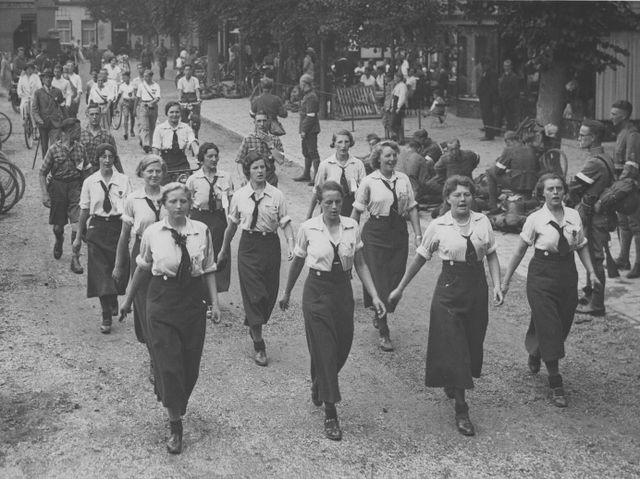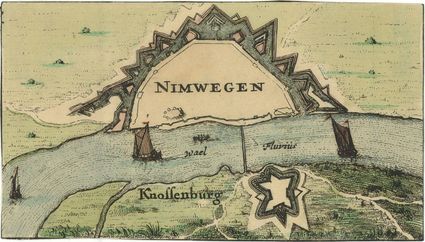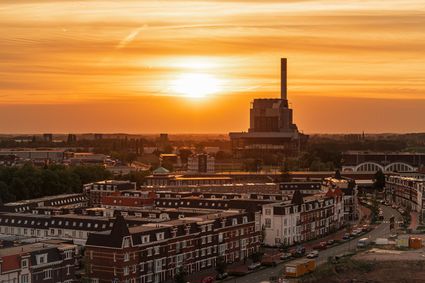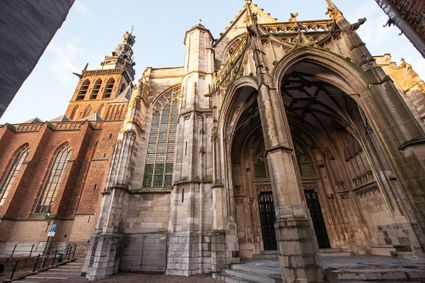Four Day Marches, sportsmanship, and hospitality
Nijmegen is bursting at the seams with historical stories, ranging from leading figures to ordinary people, from neighbourhoods to political events. The Canon of Nijmegen encompasses the most important stories about Nijmegen’s history. One of these stories tells the tale of the third week of July: the Four Day March, the (inter)nationally known and beloved hike.
In the course of the twentieth century, the third week of July, when the Four Day March takes place, became a permanent part of the calendar of Nijmegen. This was the moment when Nijmegen's citizens showed their best sides, being generally hospitable, generous, and cheerful, making Nijmegen an internationally famous city.
1912 – 1930: the origin of the Four Day March in Nijmegen
The origins of the “International Four Day Marches Nijmegen” lie in the field days for army units that were held across the country in 1904-1908. The aim of these days was to improve the physical condition of conscripted soldiers. In 1909, the (what would later become Royal) Association for Physical Education started organising four-day long-distance marches, starting from at least ten locations in the Netherlands. The first year of the marches, 306 hikers participated, most of whom were soldiers.
 1925: Civic groups and individual participants on the road on the second day of the 15th edition of the Four Day March.
1925: Civic groups and individual participants on the road on the second day of the 15th edition of the Four Day March.
In 1912, the hikers visited Nijmegen for the first time as an overnight stop. Thanks to the hospitality shown in the Prins Hendrikkazerne, the city became a regular stop for the hiking event. In 1925, the Four Day Marches came to Nijmegen for good – although this wasn’t a done deal at the time. Around 1930, shortly after the Four Day March in 1928 had started attracting hikers from other countries – Germans, Britons, Norwegians, and Frenchmen had participated – other cities tried to attract the organisation of the event. However, the Four Day Marches remained in Nijmegen because of its proven hospitality and uniquely varied walking environment: Betuwe, Ooijpolder, Beek-Ubbergen, Berg en Dal, Groesbeek, Mookerheid, and the Land van Maas en Waal.
 1991: A group of Canadian hikers (CAN) and detachment 346 of the British military contingent (GBR) on the 40 km course on the first day of the 75th edition of the Four Day March.
1991: A group of Canadian hikers (CAN) and detachment 346 of the British military contingent (GBR) on the 40 km course on the first day of the 75th edition of the Four Day March.
1937 – now: from 4,000 to 45,000 hikers
In 1937, more than four thousand hikers took part. The Four Day Marches had gradually transformed from distance marches for and by the military to a hiking event organised by a civilian association, in which military personnel also participated. A signature aspect of the Four Day Marches is the lack of a competitive element: its main objectives are to stimulate movement, preferably in a pleasant atmosphere, and to increase the resistance of the participants through exercise. After the war, the number of hikers continued to increase steadily, and by the end of the 1960s, the event had attracted some 15,000 participants. Since then, the number of participants increased by 10,000 every decade, until the present-day limit of 45,000 was reached. The hikers, who come from all over the world, are housed in schools, public buildings, and private homes. Nijmegen has long since become the sole Four Day Marches city.
Immerse yourself in the rich history of the oldest city in the Netherlands, because Nijmegen has a lot of stories to tell you. Curious? You can read all about it in this historical timeline.



